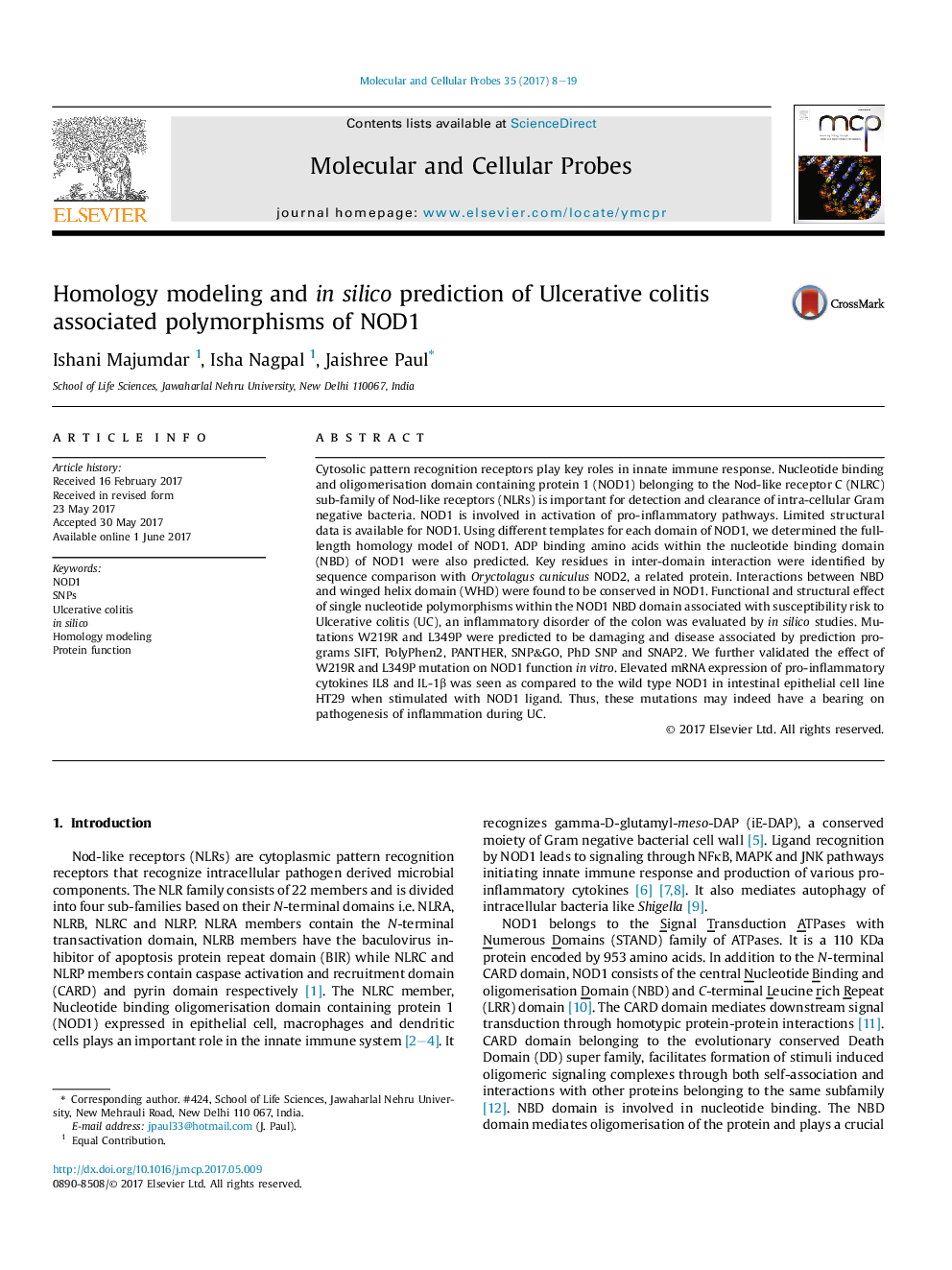| Article ID | Journal | Published Year | Pages | File Type |
|---|---|---|---|---|
| 5534467 | Molecular and Cellular Probes | 2017 | 12 Pages |
â¢Full-length homology model of NOD1 was generated using Raptor-X web server.â¢Interactions between nucleotide binding domain (NBD) and winged helix domain (WHD) are conserved between NOD1and NOD2.â¢Ulcerative colitis susceptibility associated mutations W219R and L349P were highly damaging to NOD1 function.â¢W219R and L349P substitutions caused elevated mRNA expression of pro-inflammatory cytokines IL8 and IL-1β in vitro.
Cytosolic pattern recognition receptors play key roles in innate immune response. Nucleotide binding and oligomerisation domain containing protein 1 (NOD1) belonging to the Nod-like receptor C (NLRC) sub-family of Nod-like receptors (NLRs) is important for detection and clearance of intra-cellular Gram negative bacteria. NOD1 is involved in activation of pro-inflammatory pathways. Limited structural data is available for NOD1. Using different templates for each domain of NOD1, we determined the full-length homology model of NOD1. ADP binding amino acids within the nucleotide binding domain (NBD) of NOD1 were also predicted. Key residues in inter-domain interaction were identified by sequence comparison with Oryctolagus cuniculus NOD2, a related protein. Interactions between NBD and winged helix domain (WHD) were found to be conserved in NOD1. Functional and structural effect of single nucleotide polymorphisms within the NOD1 NBD domain associated with susceptibility risk to Ulcerative colitis (UC), an inflammatory disorder of the colon was evaluated by in silico studies. Mutations W219R and L349P were predicted to be damaging and disease associated by prediction programs SIFT, PolyPhen2, PANTHER, SNP&GO, PhD SNP and SNAP2. We further validated the effect of W219R and L349P mutation on NOD1 function in vitro. Elevated mRNA expression of pro-inflammatory cytokines IL8 and IL-1β was seen as compared to the wild type NOD1 in intestinal epithelial cell line HT29 when stimulated with NOD1 ligand. Thus, these mutations may indeed have a bearing on pathogenesis of inflammation during UC.
